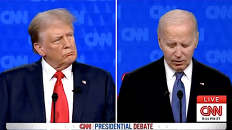ForbiddenKnowledgeTV
Alexandra Bruce
January 1, 2014
Hitler’s secret escape sub Type XIB was sunk off Cape Cod on 25th August 1944 while attempting to negotiate early end to WWII, en route to Argentina.
Nazis fleeing Germany in 1944 used this unique submarine with a massive cargo hold (to carry gold?) in an attempt to secretly escape to the United States and thence to Argentina. They never made it past Cape Cod where the sub was sunk with depth charges dropped by a US Navy blimp. The sub was jamming radio frequencies which was unfortunate, if the blimp’s radio had been working it would have almost certainly been told NOT to sink the sub. Recorded by Tony Gosling in Framingham Mass. December 1998.
Very little is known about the Type XI-B U-Boat. All official histories state that the vessel type was never built and numerous publications indicate that the Type XI-B submarine design went only as far as a preliminary ‘keel laying’ at the building yards of Deschimag – A.G. Weser in Bremen, Germany. However, there is a subtle hint that at least one vessel of this type was indeed launched from the Deschimag yards.
Contained within the records of the Military archive at Freiburgim-Breisgau, Germany is a brief mention of the “actual” yard trials in the Weser River of the Type XI U-Cruiser having attained a surface speed of 26 knots. This is supported to some degree by Eberhard Roessler’s impressive publication “The U-Boat”, in which this trial record is partly quoted. Amplified reports obtained from interviewed veterans of both the Allied and Axis intelligence services indicate very strongly that at some point during its existence, most probably in early 1944, the Type XI was berthed at the supposedly neutral ports of Vigo, Spain and Lisbon, Portugal on the Iberian Peninsula.
These same sources have stated that the unofficial reference to the Type XI was “Die Schwarz Ritter”, (“The Black Knight”). There is no “official” documentation of this but the sources seem reliable. Of primary importance in connection with this area are the German series of Special Operations known as “JOLLE”, (translated as “Happy Boat”) and “AKTION FEUERLAND”, (meaning “Action Land-of-Fire”, referring to the southern geographical area of Argentina).
These two operations were intended to pave the way for German post-war survival. Noted Nazi leaders and war criminals were in the process of laying the financial foundation for a “Fourth Reich” within the borders of such countries as Chile, Paraguay, Uruguay and, most importantly for reasons of easy access, Argentina.
CONTROLLED PANIC
As previously outlined within the ‘Overview’, the German Opposition groups associated with German Industrial concerns were increasingly bold in their contacts with the west, and possessed all the right connections to pursue negotiations for an acceptable armistice. The sole motive for the German Industrialists was to maintain their corporate identity AND their financial assets for the post-war period.
There were also many American Industrial concerns who wished to see this, as well since a large percentage of ownership in these German companies were held by large American corporations – a blatant violation of the ‘Trading With The Enemy Act’.
Research documents show that by June of 1944 there were eight separate meetings between German Industrialists and agents of the Office of Strategic Services, including Allen W. Dulles, the OSS Chief of Station head quartered in the neutral city of Berne, Switzerland. Allen and his brother, John Foster Dulles, were heavily involved in pre-war dealings between American and German Corporations through their law firm of ‘Sullivan & Cromwell’ in New York City.
Official documentation points attests that these men were motivated by personal reasons to help in creating an acceptable form of armistice which would benefit the German Industrialists directly. This also involved the safe guarding of certain negotiable German securities. Both John Foster and Allen Dulles actively assisted in the process – regardless of its direct violation of accepted US Treasury and Presidential administration policy.











Add comment